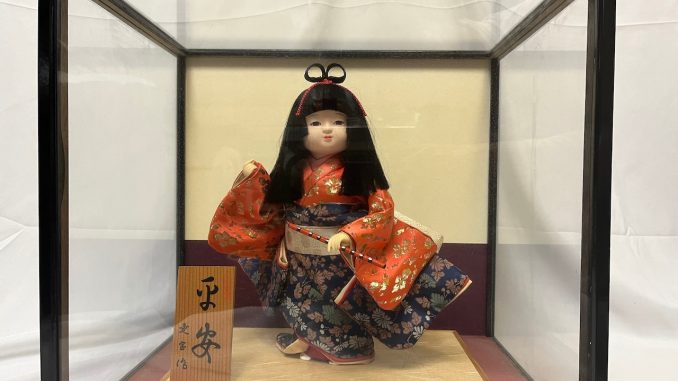
Japanese dolls are a general term for dolls that depict traditional Japanese customs.Many of them are extremely elaborately made, with every strand of kimono and hair, and facial features hand-painted by skilled craftsmen.
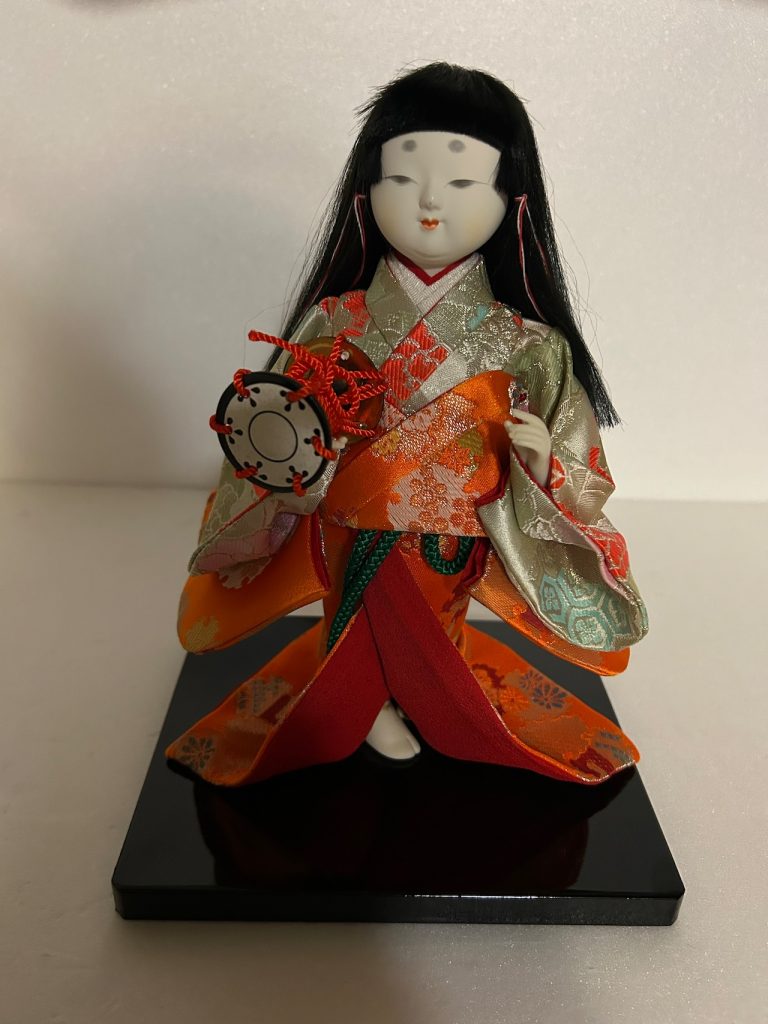
History of Japanese dolls:
In ancient times, clay figurines and haniwa figures from the Jomon period were used as substitutes.
In an era before modern media like magazines and the internet, they served as souvenirs conveying local customs and stories.
Mythological gods and characters from stories may also be modeled after and the fashion of popular kabuki actors or courtesans.
In the Middle Ages, they were included in a girl’s dowry, as they were believed to take on the bad luck of the bride in place of the bride.
Depending on the era and purpose, they represent the fashion of the time and decorate seasonal festivals.
Typical types of Japanese dolls:
市松人形【ICHIMATSU NINGYOU(Ichimatsu-Doll)】: Dolls shaped after children and some of them can be dressed up. These dolls are made of paulownia wood or wood, with heads and limbs coated in 胡粉【 gofun (clam powder) 】and attached to bodies made of cloth stuffed with sawdust.
They are sold naked, with the buyer providing their own clothing.
In addition to being a toy for girls, they were also used as sewing practice tables.
Sizes range from small ones around 20 cm to ones over 80 cm, but ones around 40 cm are the most common.
There are several theories about the origin of the name 市松【ICHIMATSU】doll.
One theory is that it was named Ichimatsu doll because its facial features resemble those of 佐野川市松【SANOGAWA ICHIMATSU】, a Kabuki actor from the mid-Edo period. He is dressed in a checkered pattern called 市松模様【ICHIMATSU MOYOU(Ichimatsu Pattern)】costume.
.jpg)
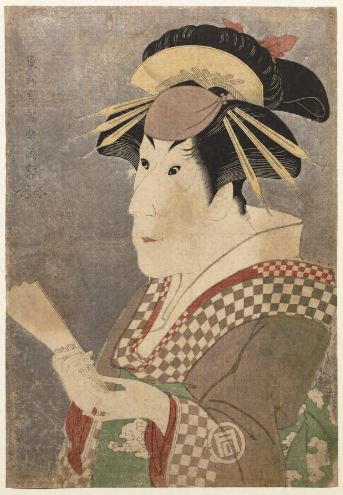
At that time, there were many children named “市松【ICHIMATSU】.
By the way, 炭治郎【TANJIROU】of 鬼滅の刃【KIMETSU NO YAIBA(Demon Slayers)】’s cloth is also 市松模様【ICHIMATSU MOYOU(Ichimatsu Pattern)】!
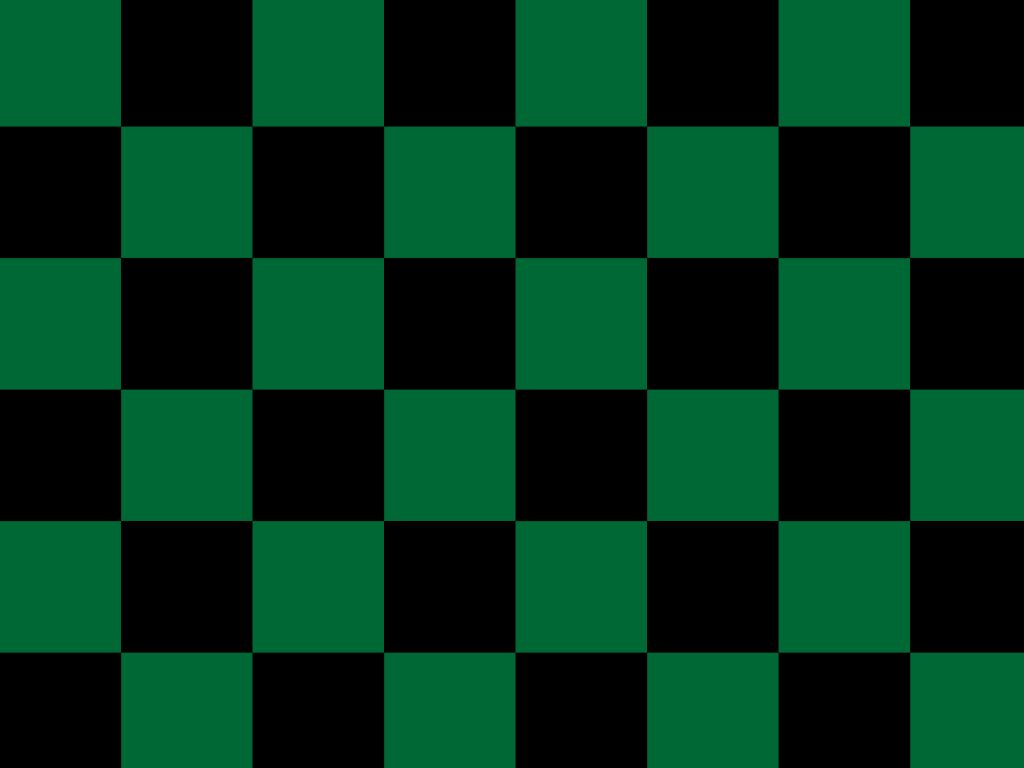

衣裳人形【ISYOU-NINGYOU(Coutume Dolls)】
Costume dolls are a general term for dolls that are dressed in custom-made kimonos.
They are made by layering multiple layers of cloth clothing onto a body made of wood or straw, and the layers of kimono give them a sense of splendor and beauty. They are particularly common in Hina dolls and May dolls, and are also called “Fuzoku dolls” or “Ukiyo-e dolls” that depict the customs and characters of stories of the past.
They are doll crafts that reflect the aesthetic sense, trends, and culture of the time.
These dolls depict various poses such as maiko, wisteria girls, and samurai girls, and the beautiful dolls of high status were also used as wedding accessories.

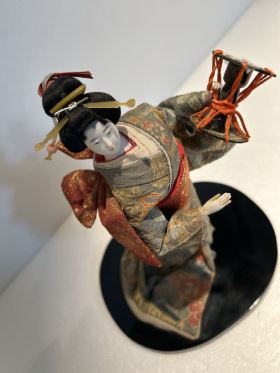

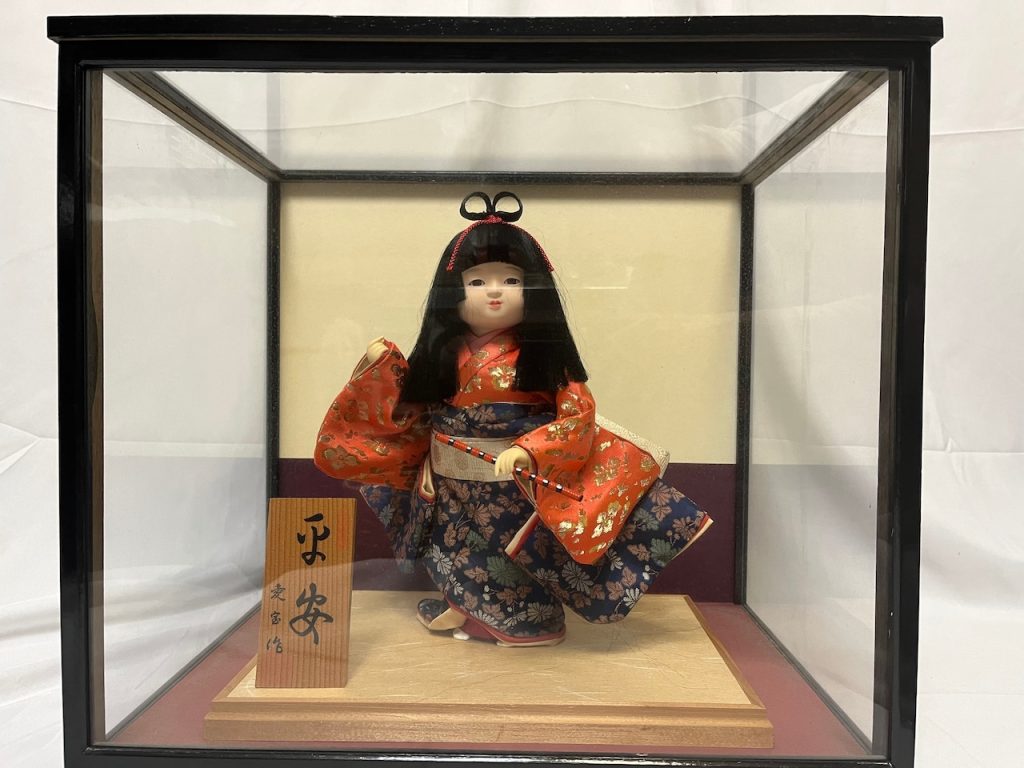
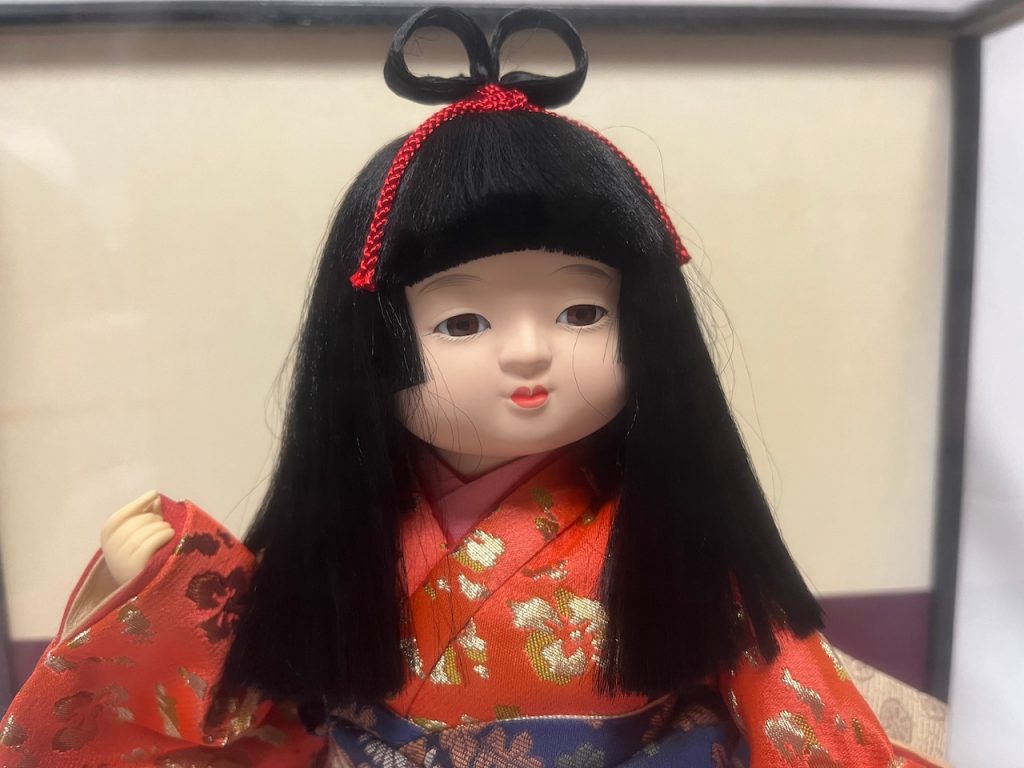
節句人形:
雛人形【HINA NIGYOU(Hina Dolls)】
▶More about Hina Dolls :
Hina dolls are displayed every year on March 3rd, the Girls’ Festival, or “Peach Festival,” to pray for the healthy growth of girls.
The most common type is a gorgeous seven-tiered display, modeled after the wedding of the Emperor, Empress, and other members of the Imperial Court. It’s common for homes with girls in Japan to have such extravagant decorations.
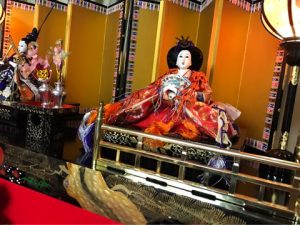

五月人形【GOGATSU NINGYOU(May Dolls)】/武者人形【MUSYA NINGYOU(Samurai Doll)】/鎧兜【YOROI KABUTO(Samurai armor and Helmet)】
These are displayed every year on Children’s Day (May 5th) and on Boys’ Day, to pray for the growth and health of boys. They often depict strong, sturdy child warriors or young warriors, or are decorated with armor and helmets. They are also often decorated with carp streamers.


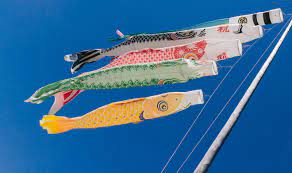
土人形【TSUCHI NINGYOU(Clay/Earthenware Dolls)】&伏見人形【FUSHIUMI NINGYOU(Fushimi Dolls)】
Earthenware dolls are a traditional Japanese craft that have been around since ancient times.
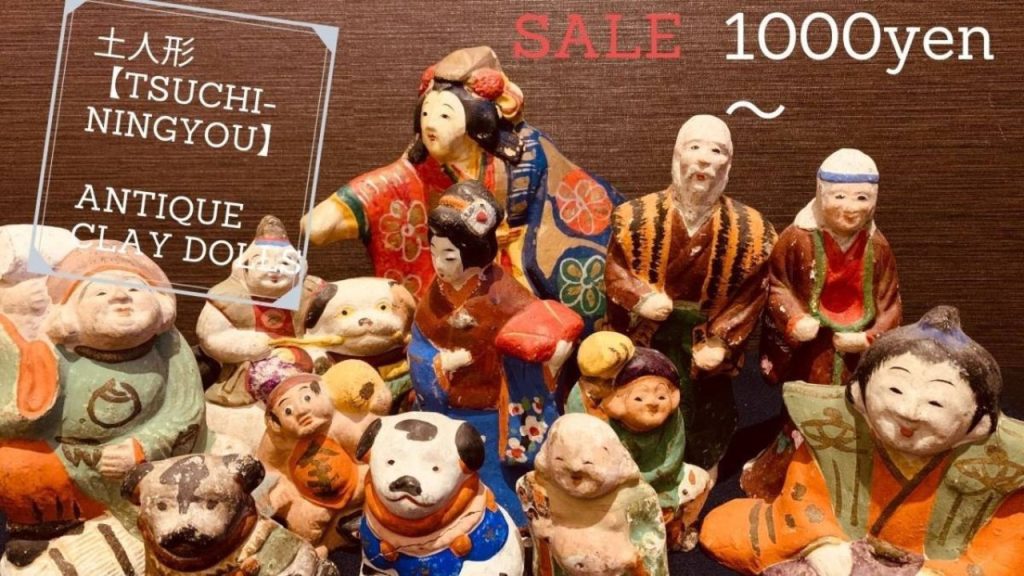
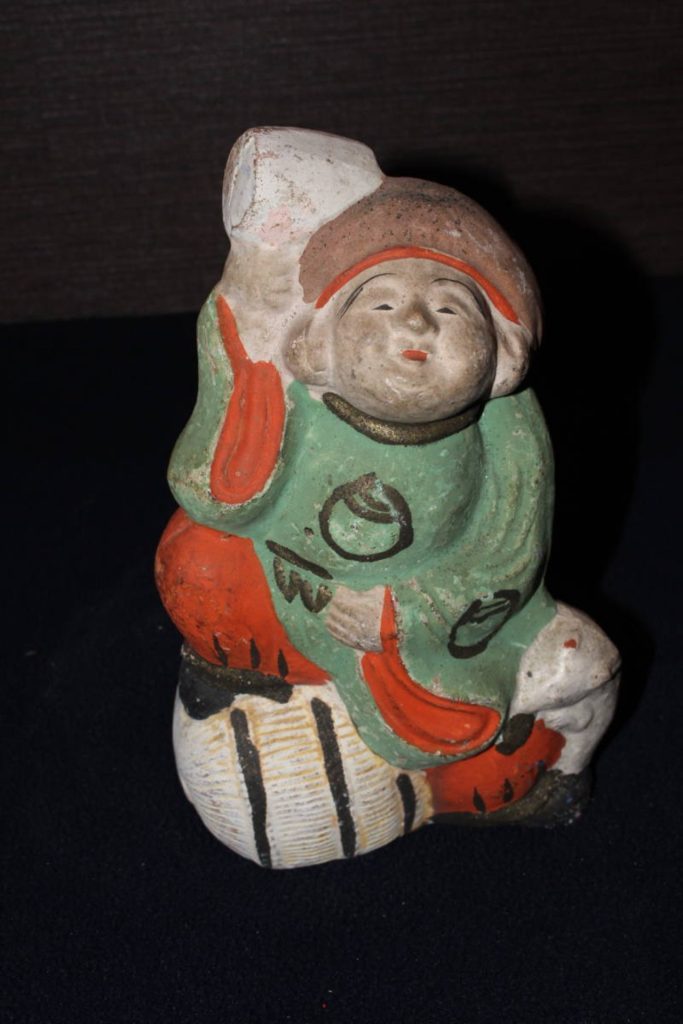
They are made by firing unglazed clay over low heat, then coating it with chalk powder and painting it with mud pigments. Their simple charm is loved by many people.
The most representative earthenware dolls are the “伏見人形【Fushimi dolls】” of Kyoto and the 博多人形【Hakata dolls】 of Fukuoka. There are also other local dolls in various regions.
Fushimi produces clay, and has been a place where Haji ware has been fired since ancient times. The clay from Mt. 稲荷【Inari】 is believed to have miraculous powers to bring blessings, and there was a custom of asking to take some home.
During the Heian period, local residents began to roll the clay into balls and sell them in stores.
During the Edo period, as the world became more stable and traffic through Kyoto and pilgrimages to Fushimi Inari Shrine became more common, other souvenirs, such as clay bells (dorei) and cow, horse, and bird figures, began to be produced and enjoyed as children’s toys. These souvenirs were then turned into elaborate dolls, including animals, primarily foxes, which were considered messengers of the Inari god, and people, such as Kintaro, and these were highly valued.
With the start of the Edo period, economic life became more stable and faith in Inari Shrine grew, which led to the need to mass-produce souvenirs for pilgrimages to the Inari Shrine, and the use of “kata” roof tile firing techniques began.
During the Edo period, Fushimi dolls were spread throughout Japan by travelers and merchants passing through Kyoto, as well as by processions of feudal lords in the western provinces, and became the prototypes for clay dolls and local toys in each region.
博多人形【HAKATA NINGOYOU(Hakata Dolls)】:
Hakata dolls are traditional unglazed crafts made from clay that is representative of Fukuoka Prefecture.
Originating from the unglazed dolls made by artisans when Kuroda Nagamasa arrived in Chikuzen, these dolls became famous nationwide in the latter half of the Edo period thanks to the efforts of master craftsmen. The dolls are made through a process that involves creating a prototype, making a plaster mold, pressing clay into the mold, bisque firing, applying a base coat of gofun (white powder) and other pigments, and then hand-painting, resulting in expressive, realistic dolls.
Made with high-quality clay from Fukuoka Prefecture, these bisque pieces have a soft texture and realistic expressions that are expressed in great detail, the warmth of the earth and realism.
As coloring techniques, the same pigments as those used in Japanese paintings, such as chalk, mud pigments, and mineral pigments, are used, and even the facial expressions and intricate patterns of the fabric are hand-painted.
Various genre are produced, including beautiful women, Noh, Kabuki, and children.
During the Meiji period, it received high praise at international expositions such as the Paris World’s Fair, and began to be exported overseas.
With a history of over 400 years, it is one of Japan’s most representative traditional crafts, characterized by its realistic, delicate expression and vibrant colors.
木目込人形【KIMEKOMI NINGYOU(Kimekomi dolls)】
are made by carving grooves into the surface of the body, which is made from hardened paulownia wood powder and glue, and then “kimekomiing” (burying) the edges of cloth into the grooves with a spatula or other tool, giving the appearance of wearing a costume.
They feature a rounded form, and the clothing is not simply attached, but is embedded into the torso, resulting in a natural finish that fits snugly to the body.
Facial Expressions: Many of the expressions are carefully drawn by artisans with a brush, resulting in soft, elegant expressions.
Compactness: Because the clothing fits snugly to the body, they are more compact than fully-dressed dolls. Another attractive feature is that they do not require much display or storage space, making them easy to display even in limited living spaces such as apartments.
Carrying and care: There is no need to worry about it losing its shape, and it is lightweight and durable, so children can enjoy handling it by picking it up and touching it. They are also suitable for exporting overseas.
It is said that the origins of Kamo dolls date back to the early Edo period (circa 1736-1741), when 高橋忠重【Takahashi Tadashige】, a handmaiden serving at Kamigamo Shrine in Kyoto, crafted small dolls from leftover willow wood while making offering boxes (boxes for rituals) for the shrine. He then filled the grooves with fabric left over from the priests’ robes. These “Kamo dolls” were brought to Edo (present-day Tokyo), where they were refined and developed into the modern-day “Edo Kimekomi Dolls.”
こけし【KOKESHI】
These wooden toy dolls were made by woodworkers in the hot spring areas of Tohoku in the late Edo period. They are said to have originated as wooden toys given to children by artisans who used potter’s wheels to make bowls and trays, and gradually became popular as souvenirs.
They are characterized by their simple shape consisting of only a head and a cylindrical body, and there are different styles depending on the region.
In addition to traditional kokeshi dolls, creative kokeshi dolls that reflect the individuality of the artist are also produced.
Kokeshi dolls were discovered in the Showa era by collectors and discerning artisans as simple art objects.

Leave a Reply